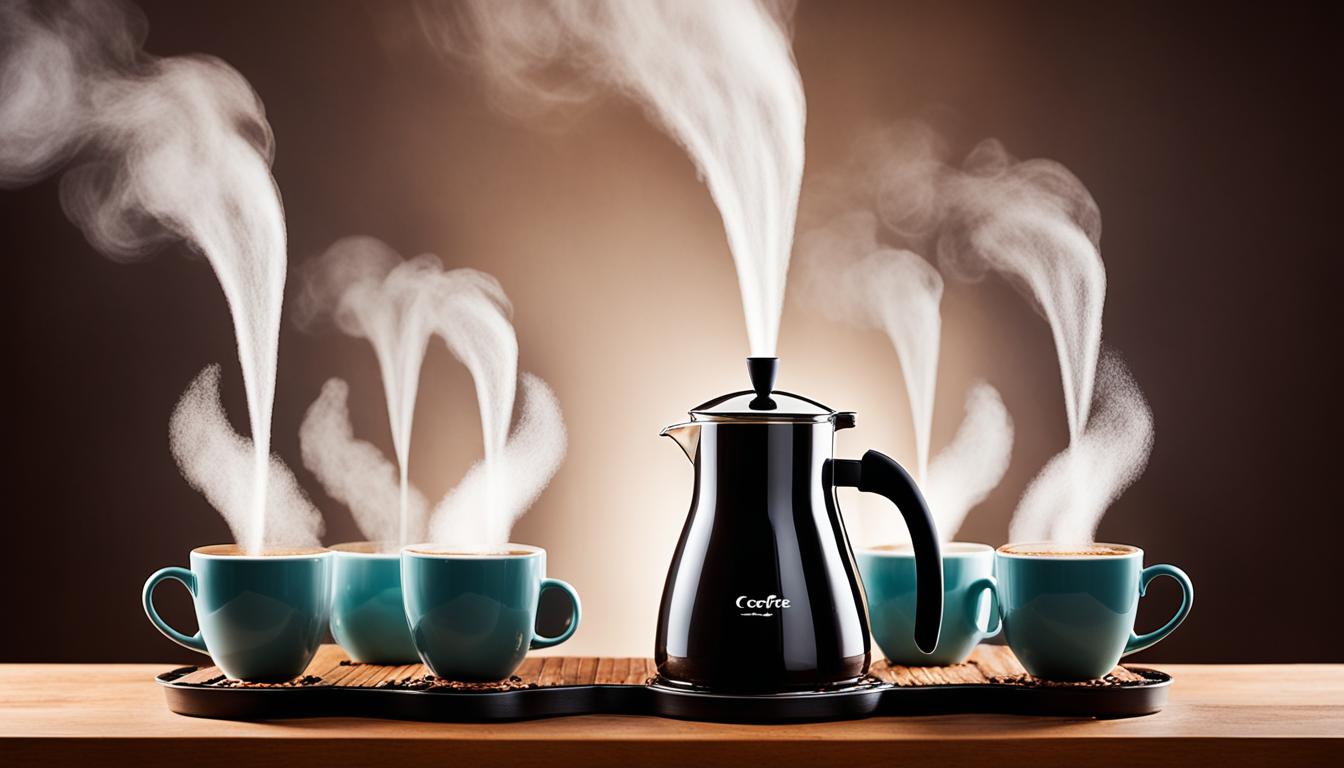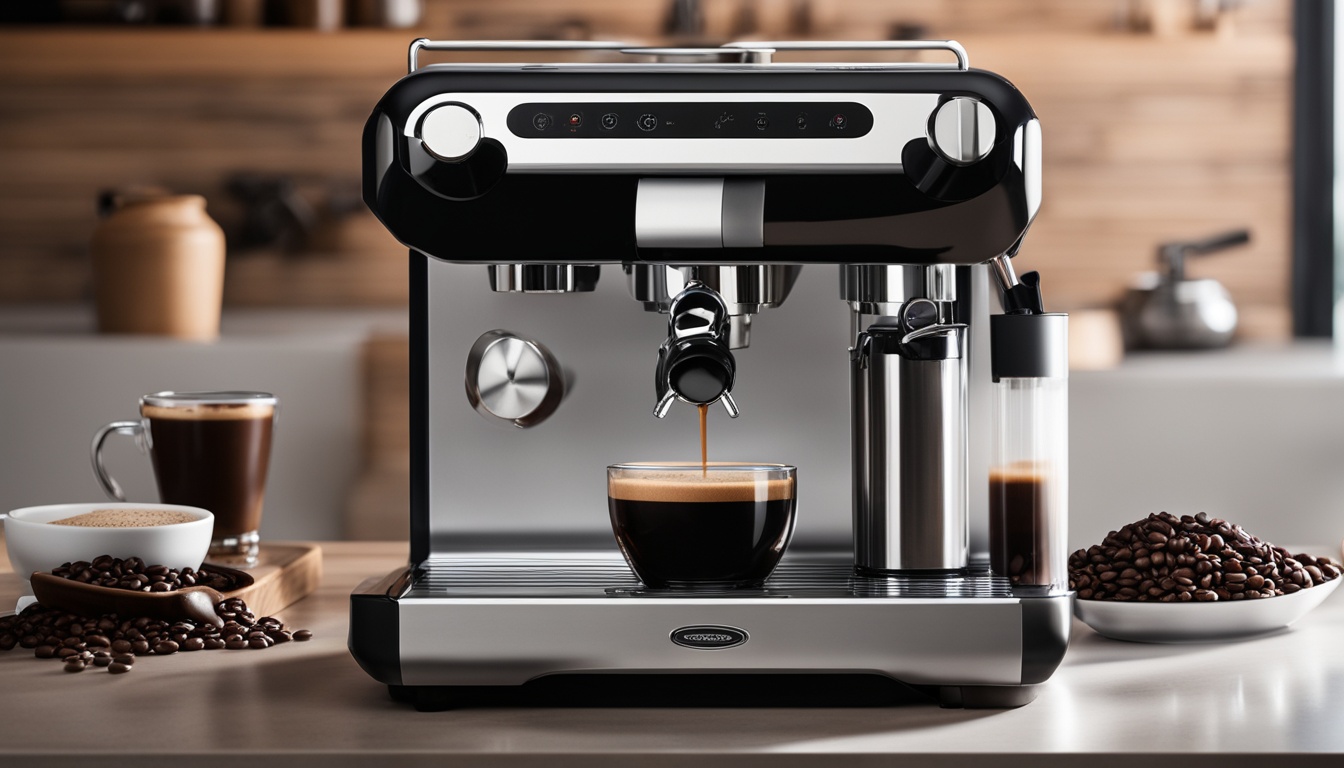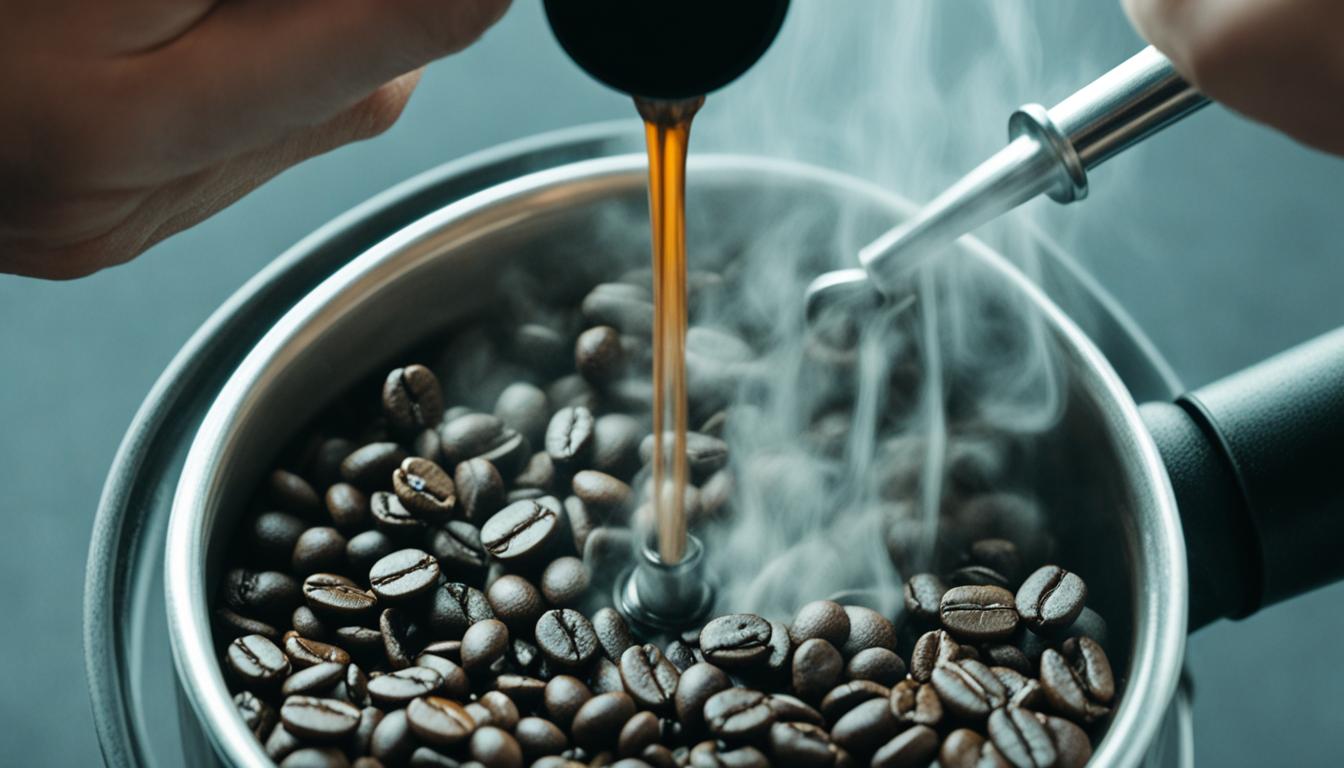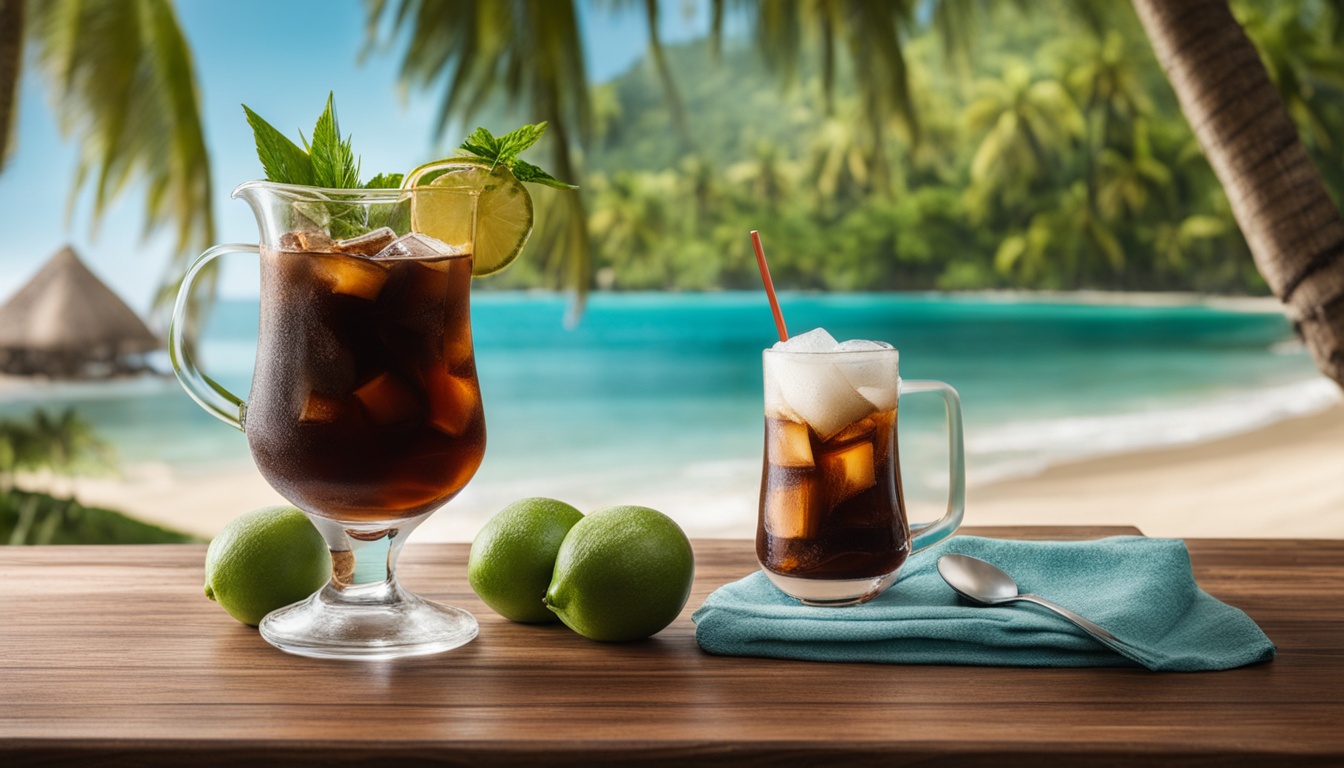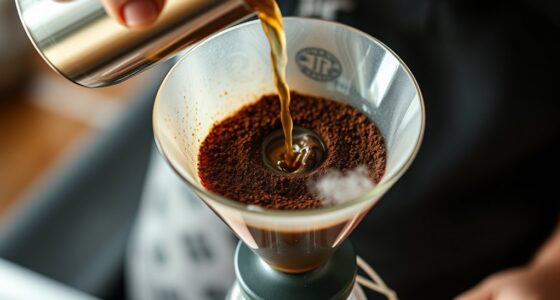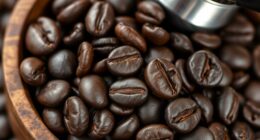Have you ever pondered if there is a secret recipe for making the best pot of coffee? Specifically, what is the ideal amount of coffee needed for six cups to achieve a perfectly balanced flavor? Knowing the optimal coffee ratio and becoming proficient in a coffee measuring guide are crucial for crafting a delightful cup. This article delves into the intricacies of drip coffee preparation, guiding you to make educated choices whether you lean towards convenient measurements or accurate, scale-based methods.
Key Takeaways
- Distinguish between standard US cup (8 oz) and typical coffee cup (6 oz).
- Recognize the common measurement for coffee maker carafes (5 oz per cup).
- Utilize approximately 12 tablespoons or 66 grams of coffee for six cups.
- Adjust amounts based on personal taste preferences and coffee maker specifications.
- Understand the benefits of quick measurements versus precise scale-based measurements.
Understanding the Golden Ratio in Coffee Brewing
The perfect cup of coffee is a pursuit that hinges on precise measurements, and the concept of the Golden Ratio has become a guiding principle for coffee enthusiasts worldwide. Defined by the Specialty Coffee Association, the Golden Ratio ensures consistency and balance in every brew.
What is the Golden Ratio?
The Golden Ratio, as per the Specialty Coffee Association, specifies approximately 55 grams of coffee per liter of water. This translates to a 1:18 coffee-to-water ratio. This precise measurement is foundational to achieving the optimal balance in your coffee, ensuring neither overpowering bitterness nor weak blandness.
Historical Background
Historically, the coffee cup size adopted by the industry is rooted in the traditional tea cup measurements, which led to the standard 6 oz coffee cup instead of the 8 oz cup recognized in the United States. This distinction is crucial for appreciating how coffee brewing standards evolved and why precise ratios matter in daily coffee preparation.
Importance of the Coffee-to-Water Ratio
The coffee-to-water ratio’s significance cannot be overstated. According to coffee brewing standards, fine-tuning this ratio is essential for crafting the desired flavor profile. While the 1:18 ratio is commonly recommended, coffee lovers frequently adjust this between 1:15 and 1:18 to match their personal taste preferences and specific brewing methods. For instance, brewing six cups may require experimenting with 57 to 75 grams of coffee to achieve the perfect taste.
In sum, understanding the Golden Ratio as endorsed by the Specialty Coffee Association is a cornerstone of effective coffee brewing standards, ensuring each cup delivers a harmonious balance of flavors.
Factors Influencing the Perfect Coffee Ratio
Achieving the perfect coffee ratio involves understanding several critical factors that influence both the coffee’s flavor and overall quality. These factors encompass the type of coffee beans, grind size, brewing method, and water quality.
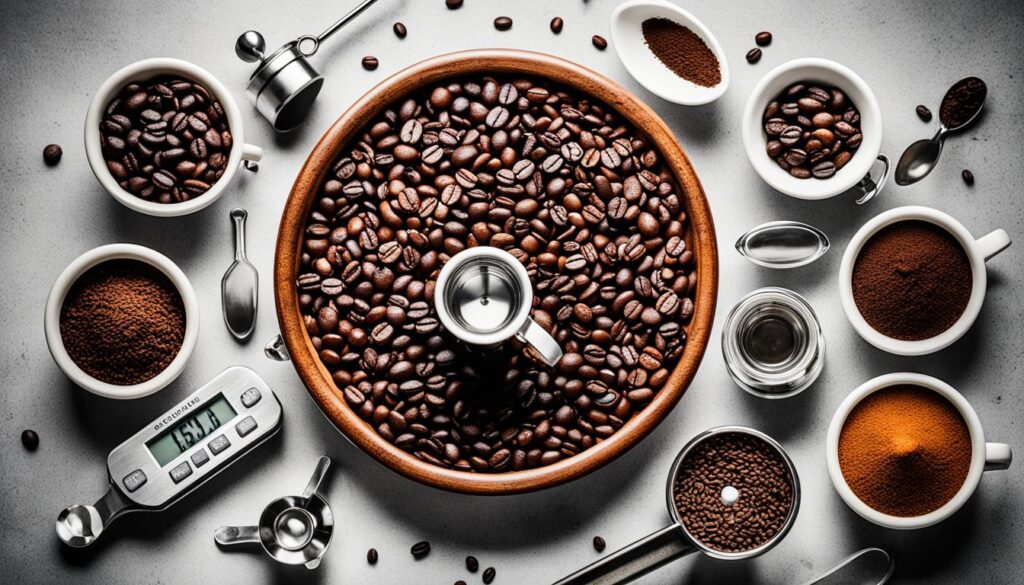
Type of Coffee Beans
The origin and roast of coffee bean varietals play a pivotal role in determining the coffee’s taste. Different regions produce beans with unique flavor profiles, such as fruity, nutty, or chocolatey notes. The roast level, whether light, medium, or dark, affects the bean’s chemical composition and, consequently, the extraction process during brewing.
Grind Size
Grind consistency is crucial in optimizing coffee extraction. Finer grinds have a larger surface area, allowing for quicker extraction of flavors, making them ideal for brewing methods like espresso. Conversely, coarser grinds are suitable for methods like French press, where longer water contact times are needed.
Brewing Method
Different brewing techniques require varying coffee-to-water ratios and affect the flavor profile differently. For instance, a French press demands a coarser grind and longer steeping time, while pour-over methods need a medium grind and precise water flow. Understanding these nuances helps in adjusting the coffee ratio for optimized taste.
Water Quality
The purity of the water used in brewing significantly impacts the coffee’s flavor. Using water with high water purity levels ensures a cleaner taste, free of off-flavors. Tap water, if chlorinated or mineral-heavy, can introduce undesirable tastes, making filtered or bottled water a better choice for a consistent brewing experience.
Using a Scale versus Using a Scoop
When it comes to achieving coffee measurement accuracy, the debate between using a scoop and a kitchen scale is crucial. The coffee scoop standard typically holds two tablespoons of coffee, which some baristas might consider a quick go-to for measuring. However, factors like grind size and density can lead to inconsistent measurements, impacting the final taste of your brew.

On the other hand, opting for the benefits of a kitchen scale for measuring coffee by weight can transform your brewing experience. Weighing coffee grounds ensures a precise coffee-to-water ratio, undeniably influencing the consistency in flavor and strength of the coffee. While using a scale might imply a bit more effort and cleanup, many coffee enthusiasts agree it’s worth the reliable and satisfying results.
Below is a comparison between using a scoop and a scale for measuring your coffee:
| Method | Pros | Cons |
|---|---|---|
| Coffee Scoop |
|
|
| Kitchen Scale |
|
|
Ultimately, emphasizing the kitchen scale benefits offers a more dependable method for achieving a well-balanced and flavorful brew. Choosing between these tools can significantly impact your coffee’s quality, transforming your daily coffee ritual into a true craft.
How Much Coffee for 6 Cups
The amount of coffee needed for six cups may differ depending on whether volume or weight measurements are used. Understanding both methods helps in achieving consistency and taste customization to suit individual preferences.
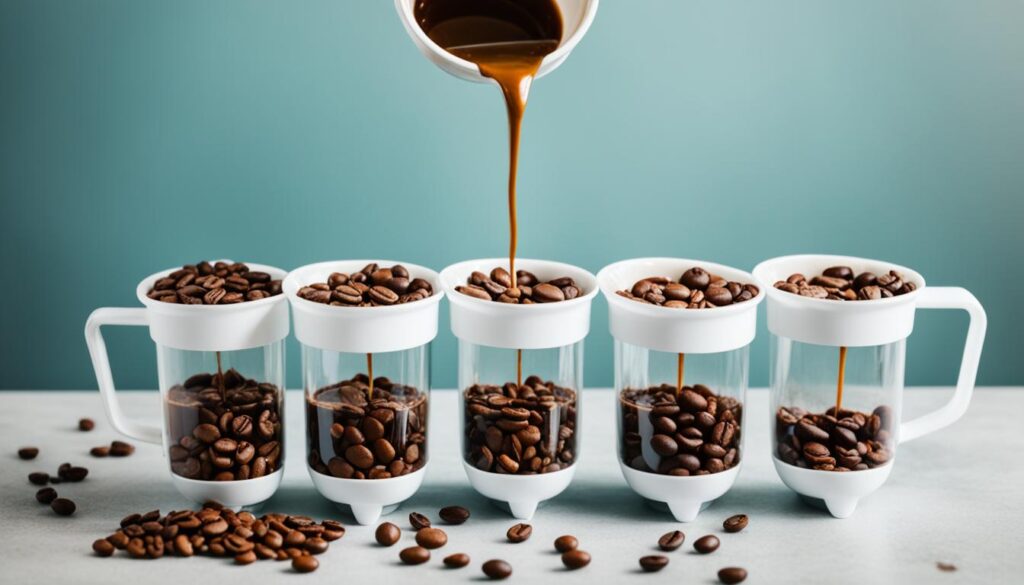
Volume Method: Scoops and Tablespoons
The volume method is a popular choice for its simplicity and ease. Typically, it involves using a coffee scoop or tablespoon. Standard guidelines suggest about 12 tablespoons for six cups of coffee, noting that one scoop equals roughly two tablespoons. This method can be quick and efficient but may lack the precision necessary for those keen on specific flavors due to variations in coffee volume measurement caused by grind size and density.
Weight Method: Grams and Kitchen Scales
For those who seek precision, the weight method using grams and a kitchen scale is highly recommended. The industry-standard coffee-to-water ratio suggests using approximately 66 grams of coffee for six cups. This method offers accurate weighting, ensuring consistency from brew to brew. While it requires more effort compared to scoops and tablespoons, the resulting coffee’s flavor is more consistent and tailored to exacting standards.
Adjusting for Personal Taste Preferences
It’s important to fine-tune your coffee ratio to match personal taste preferences. While standard measurements provide a good starting point, individual taste varies significantly. Some may prefer a stronger brew and hence might increase coffee quantity slightly, while others might reduce it for a lighter flavor. Mastery of both volume and weight methods, along with precise adjustments, enables one to achieve a truly customized coffee experience that is delightful and tailored to personal preferences.
Step-by-Step Guide to Measuring Coffee for 6 Cups
When embarking on the journey of brewing an impeccable pot of coffee, especially for six cups, it’s imperative to follow a well-defined sequence. This coffee preparation tutorial emphasizes accuracy and adaptability to individual taste preferences. Begin by gathering the requisite amount of coffee. If opting for the volume method, measure out 12 tablespoons, while the weight method calls for about 66 grams based on a standard 1:16 coffee-to-water ratio.
Selecting the appropriate measuring tool, whether scoops, tablespoons, or a kitchen scale, is crucial for maintaining consistency. Place the coffee grounds into your chosen tool and measure precisely. For those utilizing scoops or tablespoons, keeping uniformity in scoop sizes ensures that the coffee quantity remains consistent. When using a scale, aim for the exact weight to achieve a balanced flavor profile.
It’s essential to account for the specific guidelines of your coffee maker. The markings on coffee maker carafes can often differ from standard US measurements, typically indicating a 5 oz cup rather than the 6 oz standard. Therefore, you may need to slightly adjust the amount of coffee to align with your coffee maker’s measurements and your personal taste preferences. Remember, the art of coffee brewing involves a touch of experimentation. While general guidelines offer a foundation, fine-tuning the coffee-to-water ratio based on the type of coffee and individual palate will help in brewing a perfect pot.
By following this step-by-step coffee brewing guide, you will not only ensure that your measurements are accurate but also that the coffee’s strength and flavor align with personal and equipment-specific preferences. As you become more familiar with this process, you’ll find that these coffee measuring instructions cater to both precision and versatility, ultimately enhancing your coffee brewing experience.
